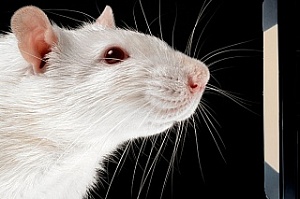Scientists at the Faculty of Physical Education are conducting research aimed at developing a new, nonpharmacological method for treating diabetes mellitus type 2. Theoretically, it is possible to reduce the sugar content in the blood by intensive physical exercise, but it is not known which exercises would be most effective. The scientists intend to discover these patterns by experiments with mice. The data obtained could be the basis for a new therapeutic approach to the treatment of diabetes mellitus and other serious metabolic disorders.
- Diabetes mellitus type 2 is difficult to correct because patients with this disease develop insulin resistance,- says Professor Leonid Kapilevich, head of the Department of Sport and Health Tourism, Sports Physiology, and Medicine. - The body of a sick person produces insulin, but this hormone for some reason does not affect the muscles that normally absorb glucose and convert it into energy. Therefore, currently the main way to fight this type of diabetes is a strict diet with carbohydrate restriction.
Scientists will conduct an experiment in which they will provoke the development of diabetes mellitus type 2 in laboratory mice. For three months, mice will be fed high-calorie food with increased fats and carbohydrates. It is this imbalance in nutrition in combination with a sedentary lifestyle that often leads to the development of metabolic syndrome in humans.
Then, the mice will have a month of intense physical activity. They will exercise for 40 minutes every day on a treadmill, which one of the Tomsk enterprises has specially made for the researchers. Simultaneously, 10 animals will go for a run; moreover, one group will train at 8.30 am and the second group will train in the evening, at 20.30.
- After completion of the experiment, the main chains of signal molecules that have been developed in the muscles of the mice (calcium ions, cyclic nucleotides, and others) will be studied. This will make it possible to understand which regulatory systems are most active at a given load, - says Leonid Kapilevich. - Secondly, we will compare the sick mice with the control group of healthy ones who have eaten without excess and trained in the same regimen, to find out what systems they have that are different and why the resistance to insulin decreases.
And, finally, the third question that scientists intend to answer is which training is more effective. If the evening group achieves a greater effect, it means that it may be better for a person to exercise in the morning, because the periods of daily activity in humans and mice are exactly opposite.
In the other projects, scientists plan to continue their research and find markers that will prompt what tests the patient needs to select for the most effective training that corrects metabolic disorders.

